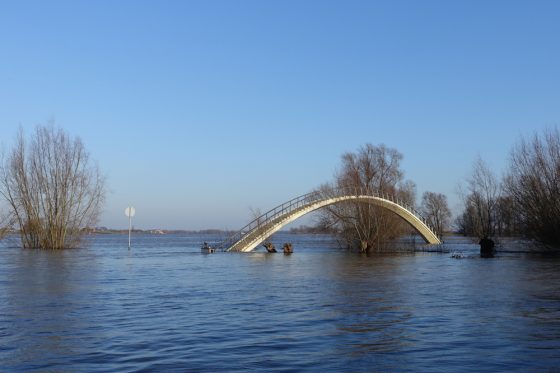Water levels continue to rise in Dutch rivers, due to rain and melting snow

The water level in the Rhine near the border with Germany was higher than expected on Tuesday as rain and melting snow from the Alps continued to swell the volume of water in Dutch rivers.
The key water level measurement at Lobith reached 14.52 meters above NAP on Tuesday morning, 30 centimetres higher than officials had predicted.
NAP stands for Normaal Amsterdams Peil or the normal water level in Amsterdam, which is slightly lower than sea level. NAP is used as a base to measure how high or low water levels are. So when the river Rhine is high, it is described as a certain number of metres ‘above NAP’.
If the water level reaches 15 metres above NAP, parts of Nijmegen will be flooded. During the last serious floods, in the 1990s, the water level at Lobith reached 16 metres above NAP.
Although officials say there is no danger of widespread flooding outside the flood plains, they have closed some dykes and extra inspections are taking place.
The lowest point in the Netherlands, in Nieuwerkerk aan den IJssel, is 6.76 metres below NAP.
Thank you for donating to DutchNews.nl.
We could not provide the Dutch News service, and keep it free of charge, without the generous support of our readers. Your donations allow us to report on issues you tell us matter, and provide you with a summary of the most important Dutch news each day.
Make a donation